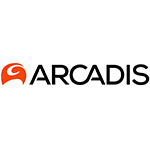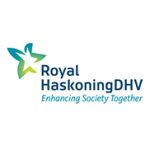Detection
Important for the detection phase is a tight inventory of the required personnel and equipment during the work preparation. At first sight, the detection phase seems very technical, with companies distinguishing themselves only by using the most advanced techniques. In reality, almost every company uses the same measuring equipment and the distinguishing feature lies in their expert staff.
Personnel as a distinguishing factor
The strength of ECG lies in our expertly trained staff. How is that possible? No matter which detection method is recommended: they all measure objects containing metal in the soil. It is then up to the staff to interpret this measurement data. The personnel determine whether a measured object represents a grenade or a drawing pin, and thus whether the object will be excavated or not. Well-trained personnel can therefore mean the difference between approaching 200 or 20 objects. It is easy to do the math.
The detection phase is a logical continuation of the preliminary investigation and any Risk Analysis (RA) carried out. The preliminary investigation gives an indication of the location of possible explosive remnants of war. During the RA, a risk assessment is made in view of the work planned by you. In order to ensure that the on-site investigation proceeds as efficiently as possible, a project plan is drawn up during the work preparation phase. The detection phase is the first step in the implementation of this project plan.
During the detection phase, it is determined whether objects containing metal (such as explosives) are actually present within suspected locations. Advanced measuring techniques are used to map out the mass and depth of these objects. The detection data obtained are recorded immediately or at a later stage and analysed and interpreted by specialists. During the interpretation, the suspicious objects are distinguished from the other objects and included in an overview list. Subsequently, we draw up a detection report and advise you on possible follow-up steps.
The staff of ECG is fully certified according to the CS-OO regulations. This means that the expertise of our experts is tested and periodic exams have to be taken. Only after positive completion of this exam will they be put to work. This assures you of qualified technicians for your project.
"Mooder Maas (Dura Vermeer - Ploegam) is doing business with ECG for the OCE investigation because of their expertise in this field. The contractors have been working with ECG for years on previous projects. Through their experience, ECG knows what is and what is not possible. The flexible attitude towards our work creates a good mutual cooperation."

Stijn Rutten
Operational Environment Manager






Frequently asked questions
Yes, detection is always possible. However, it is questionable whether useful measurement results can be expected. Detection involves measuring metallic objects in the soil. When there are too many disturbing objects in the area or in the soil, the detection will be too much disturbed to allow a good interpretation of measurement data.
With depth detection, measurements are carried out by means of probing. So one actually goes into the soil. With surface detection, measurements are carried out at ground level and signals are sent into the soil.
The area should be as flat and clean as possible to ensure good detection. Disturbing objects such as fences, cattle, vegetation, etc. should therefore be removed. If this is not possible, a solution will be found together.
Yes, indeed. ECG has sailing equipment that can take measurements of water bottoms.